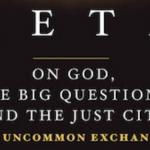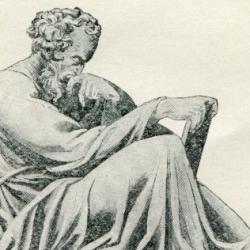In his book Our Mathematical Universe, cosmologist Max Tegmark puts forward both a big question and provocative solution. First, the big question:
“But why has our physical world revealed such extreme mathematical regularity that astronomy superhero Galileo Galilei proclaimed nature to be ‘a book written in the language of mathematics,’ and Nobel Laureate Eugene Wigner stressed the ‘unreasonable effectiveness of mathematics in the physical sciences’ as a mystery demanding an explanation?” [1]
Time and time again, mathematicians, philosophers, and scientists wrestle with this question. Tegmark’s solution is “that our physical world is not only described by mathematics, but that it is mathematics, making us self-aware parts of a giant mathematical object” which “leads to a new and ultimate collection of parallel universes so vast and exotic that all the above-mentioned bizarreness pales in comparison, forcing us to relinquish many of our most deeply ingrained notions of reality”.
The “unreasonable effectiveness of mathematics” and Tegmark’s “Level 4 Multiverse” very much go hand in hand – in Tegmark’s view there are actually an infinite number of parallel universes and all structures that can be described mathematically actually exist physically. Hence, the ultimate nature of reality is not physical, but mathematical.
In a sense, it’s a much less mystical position epistemologically than Plato’s; an immaterial realm of mathematics separate from reality. In Tegmark’s metaphysics, our cognitive access to mathematics becomes much less bizarre as the entirety of existence is mathematical. At the same time, this solution to the “unreasonable effectiveness of mathematics” is quite disturbing to the commonly held methodologically naturalistic physical idea of existence (that nature is ultimately matter). Everett’s “Many Worlds” interpretation of quantum mechanics and the infinite universes that follow sound strange enough (“Level 3 Multiverse”), the move to Tegmark’s Level 4 is even more bold empirically (there are infinite number of universes) and metaphysically (and the ultimate reality is mathematical).
Whether Tegmark’s theory can be supported on empirical and metaphysical grounds (opponents of both say the scientific evidence is lacking and the metaphysics is just bizarre, specifically for a naturalist), there is incredible coherency in the “unreasonable effectiveness of mathematics” is his theory. Though I disagree on the metaphysics, I appreciate the consistency and his brave undertaking of the “unreasonable effectiveness of mathematics”, far out from traditional naturalism.
Notes:
[1] Tegmark, Max. 2014. Our Mathematical Universe: My Quest for the Ultimate Nature of Reality. New York: Vintage, 6.
Image Credit:
Author: XoMEoX
Source: Wikemdia Commons / Texture













